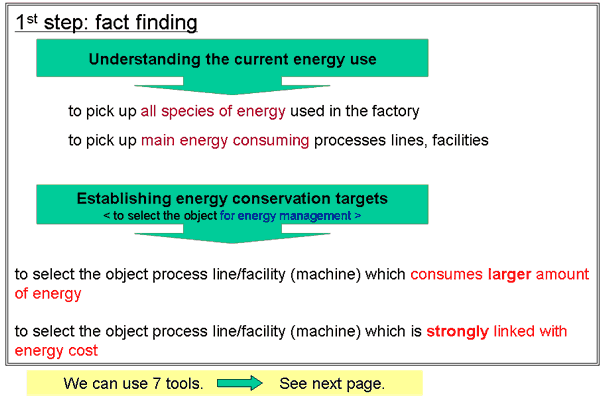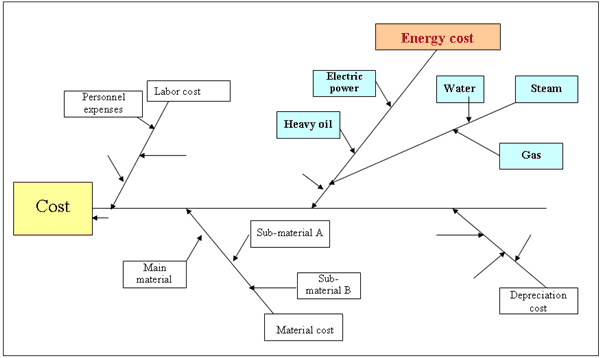“Energy Intensity” (or “energy unit consumption”)
The definition is:
“Energy Intensity” can be applied for “whole factory”, “individual process line”, “each machines”.
“Energy consumption amount” --- heat (J) and/or electric power (Kwh) (→ combined in crude oil equivalent) --- can be represented by individual particular unit --- steam: ton, water: m3, fuel: Kl etc.
“Production amount” --- unit: weight (tonnage), number of products, treated area(m2), working time (h), etc.
Example: energy intensity of boiler
A) The condition of boiler operation
a. steam production rate (without electric generation) 4,090 ton per month
b. fuel consumption rate (LHV=41.7 GJ/k-litter) 300 kl per month (bunker-C)
B) Calculation
energy intensity of boiler = fuel consumption / steam production = 300,000 l / 4,090 ton
= 73.3 l-Bunker-C / t-Steam = 3.06 GJ / t-Steam
the price of Bunker-C is 34,000 Yen / kl, shown by energy cost : 2,492 Yen / t-Steam

